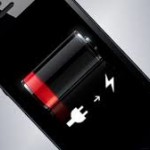Have You Recently Left Corporate Life?
What You Need to Know
- Have you recently left corporate life either by choice or the result of downsizing?
- Do you have the right tools for your job search?
- Do you have the most cost effective system for your home office?
- Are you an effective “Road Warrior?” Does your technology support your mobile needs?
- Since you no longer have a support desk, do you have someone to help you with maintenance issues?
- What about security issues, backup, and a disaster plan?
Setting up a Home Office
- Equipment selection
- Software
- Services
- Maintenance and security
On the Road – Mobile Needs
- Laptops
- Internet access
- Smartphones and tablets
- Minimizing communication costs
- Online services (cloud computing)
- Maintenance and security
Need help making the right decisions regarding your tech requirements for home and on the road? Contact me either by phone 917 921-4518 or by e-mail at jblue@bluetutor.com for a free consultation.
Do You Need Help With Tech?
The Wall Street Journal reports that seniors are relying too heavily on their children to solve their technology problems. “Older adults are wising up to how iPads, smartphones and fitness trackers can improve their lives. But a key to conquering fears and thriving with new technology is knowing where to get help that won’t run out of patience.”
Writes Geoffrey A. Fowler, “Click what?” “Plug where?” Asking your offspring for tech support is… just asking for it. Their responses, often accompanied by an eye roll: “Why is that so hard?” or “I already showed you!”
If you need tech support , find help from people who are technically sound and most important, patient.
To read the complete article from the WSJ, CLICK HERE
Why You Need a VPN (Virtual Private Network)
Your internet connection may not be as safe as you’d like to think. If you’re connected to a public Wi-Fi network (coffee shops like Starbucks, hotels, airports, public parks, etc.), it’s possible that another person on the same network could be sneaking a look at your internet traffic.
Your iPhone or Android mobile device can’t protect your data as it travels the internet. Using a VPN keeps your information safe and private, even when you’re connected through an insecure Wi-Fi hotspot.
A Virtual Private Network (VPN) is a network technology that creates a secure network connection over a public network such as the Internet.
To read a complete review from PCMag of all the best VPNs for your mobile phones, click HERE.
What You Need to Know About The New Unlimited Data Plans
US wireless customers (Verizon. AT&T, Sprint, T-Mobile) have released a range of “unlimited” plan choices. This is the latest in an outgoing price war that has been raging for years.
Before you start evaluating which plan will save you the most money, remember that you must determine which provider offers the best service in your area. Are you frequently getting disconnected in the middle of a call? How is the voice quality of the calls? Quality and Coverage, not price, are the primary factors in picking a cell provider.
Click Here to read my blog on How to Select a Cell Phone Provider.
Having overcome quality and coverage concerns, which plan is the best? Although the basics for each carrier are similar, there are different trade-offs.
Click Here to read more.
How to Safely Access The Internet On The Road
 You probably take for granted that no one else is able to see when you are using the Internet. A Virtual Privste Network (VPN) allows you to create a secure connection as a shield for your browsing activity from others on public Wi-Fi, and more. VPN is a technology that creates an encrypted connection over a less secure network. An example is an unsecured Wi-Fi network that is used by hotels, airport terminals, hotels, coffee shops, and other free Wi-Fi areas.
You probably take for granted that no one else is able to see when you are using the Internet. A Virtual Privste Network (VPN) allows you to create a secure connection as a shield for your browsing activity from others on public Wi-Fi, and more. VPN is a technology that creates an encrypted connection over a less secure network. An example is an unsecured Wi-Fi network that is used by hotels, airport terminals, hotels, coffee shops, and other free Wi-Fi areas.
The protection provided by a VPN offers many advantages. It prevents anyone on the same Wi-Fi hotspot (or anywhere else) from intercepting your Web traffic. This is especially handy for travelers and for those using a public Wi-Fi network. VPNs also cloak your computer’s actual IP address, making it harder for advertisers (or spies and hackers) to track you online
Over 100 million Americans have their personal information placed at risk of identity theft every year. One of the major reasons of identity fraud is a result of entering personal information such as user names and passwords, credit cards purchases on unsecured Wi-Fi locations.
It’s Tax Time Again – How to Minimize the Risk of Tax Fraud
It’s tax time again. Income tax identity theft is a major problem. According to the IRS, “Tax-refund fraud is expected to soar again this tax season, and hit a whopping $21 billion.“ Thousands of people have lost millions of dollars and their personal information to tax scams and fake IRS communication.
The most common way income tax fraud occurs is when a thief files an income tax return using a victim’s Social Security number, along with a counterfeit W-2, indicating that a large refund is due.
It is important to note that the IRS doesn’t initiate contact with taxpayers by phone, email, text messages or social media channels requesting personal or financial information. The IRS also does not threaten taxpayers with lawsuits, imprisonment or other enforcement action.
The simplest way to reduce the risk of income tax fraud is by filing your income tax return as early as possible. If you file early, your tax refund will most likely be processed before the IRS receives the fraudulent return.
Below is an audio file of an interview I had last year on my BlogTalkRadio program with Steve Weisman, a lawyer, writer, college professor, and one of the country’s leading experts in scams and identity theft. In the interview, we discuss how to reduce the risk of tax fraud and the steps you can take to minimize identity theft. I encourage you to take a few minutes to listen to the broadcast.
How to Minimize Your Communication Costs When Abroad
 Planning an overseas trip and want to be able to keep in touch with family, friends, and business associates back in the US without incurring large telephone and texting charges? Having an “international” smartphone doesn’t mean you can automatically use it to make and receive calls as if you were still at home. Just last week I received a call from a client who was appalled that he received a bill from his mobile phone carrier for $1200 after returning from a ten day trip to Europe.
Planning an overseas trip and want to be able to keep in touch with family, friends, and business associates back in the US without incurring large telephone and texting charges? Having an “international” smartphone doesn’t mean you can automatically use it to make and receive calls as if you were still at home. Just last week I received a call from a client who was appalled that he received a bill from his mobile phone carrier for $1200 after returning from a ten day trip to Europe.
I have written many times that it’s impossible to recommend a computer, program, and service that fits all. The same is true regarding a communication plan. Here’s a list of some of the things that must be considered before selecting the best strategy to manage your communication costs.
– Do you have an international phone?
– Where will you be traveling to?
– How long will you be away?
– What will be your primary means of communication (phone, text, e-mail)?
– How important will it be for you to access information (using your data plan) such as news, social networking, etc.?
– Will your hotel/residence have Internet access, and is there a cost for it?
– Will you have access to wi-fi?
I have written a number of times about the different ways of using your phone overseas at no cost. I have suggested you look at Viber, WhatsApp, MagicJack, and Skype. All have the ability to communicate for free from anywhere you can access the Internet through a wireless connection.
With many smartphones, you can purchase a simcard in many countries that will fit in the side of your phone, allowing you to use a local number; thereby, reducing the cost of each call.
However, each of the major mobile phone providers (Verizon, AT&T, Sprint, T-Mobile) offer international plans that, for a fee, will substantially reduce, and in several cases, let you use your phone as if you were in the US. For example, for either a daily or monthly fee, Verizon Wireless lets you use your phone in many parts of the world as if you were still home.
Below is a list of the major mobile providers. Click on your provider, and you will be able to review the different plans available to you.
Verizon International Calling Plans
AT&T International Calling Plans
Sprint International Calling Plans
T-Mobile International Calling Plans
Keep in mind, the plan you select is based on where you will be travelling, the length of your trip, and the availability of wi-fi.
Lastly, you can always rent an international phone here in the US from a company such as Cellhire.
The important think to remember is there is no need to be out of touch or pay exorbitant prices while travelling abroad.
Child Off to College This Fall? What You Should Know
As a parent, do you have the basic computer skills to maintain contact with your college student? Does your technology support your efforts, and do you have the most cost efficient systems in place?
The following are some points that you should be thinking about before the move-in date:
– Will you need to upgrade either your equipment or services?
– How do you determine your child’s equipment needs while in college?
– Does the cell phone provider that you use at home (Verizon, AT&T, Sprint, etc.) have a strong network at your child’s school?
– What can you do to keep your communication costs down?
– What are the most cost efficient ways to stay in communication with your child in college?
– How do you keep in contact with your child who is studying abroad without incurring large telephone charges?
– Has your child’s school granted you online access to key school resources?
– Does your child know how to reach you 24/7?
The chances are that your child may be more up-to-date on the latest technology than you. It is important that you discuss a strategy to communicate in a cost efficient manner. If your child is studying thousands of miles away, or perhaps in any country, you do not want to incur telephone charges that approach the cost of tuition!
Most universities no longer provide phones in their dorms. The use of cell phones and other mobile technology tools has significantly enhanced our ability to maintain our relationships with our children in college. Are you prepared?
How to increase the life of your smartphone’s battery
 Is your smartphone’s battery lasting half a day? Is your phone dying in the middle of an important call, playing a game, or while you are streaming a video or music?
Is your smartphone’s battery lasting half a day? Is your phone dying in the middle of an important call, playing a game, or while you are streaming a video or music?
Here are several tips on how to improve the life of your smartphone’s battery.
– Avoid keeping your screen’s brightness all the way up. Do not use the brightness of the screen as a flashlight. Your phone probably comes with a flashlight app.
– Reduce the amount of time you are playing Candy Crush, Pokemon Go and other games
– Keep an eye on how much you are checking your Social Media apps. Social media is great for keeping up with your friends but constantly checking your Facebook page will kill your battery by midday.
– Disable Bluetooth when not using it. Unless you are using apps that need it or using your auto’s Navigation System, turn it off.
– Streaming music sites such as Spotify, Pandora, Rhapsody, and more are the biggest battery killers. Listening all day will require numerous battery charges.
– Watching videos from services such as Netflix, Hulu and others drains your battery
– Check to see how many of your apps are using location services. This service is necessary when using GPS or location-based services. However, is it really necessary for your news and search apps to know where you are?
– Be careful how often you use Facebook Messenger emojis. Sending them constantly in the course of the day will kill your battery.
To read more, Click Here
